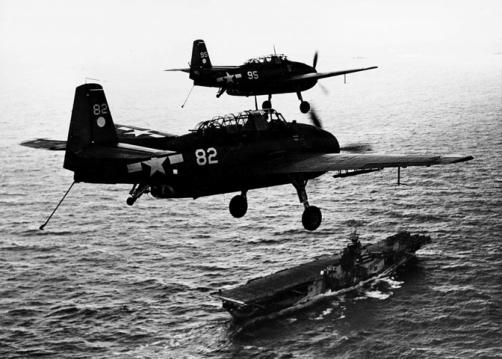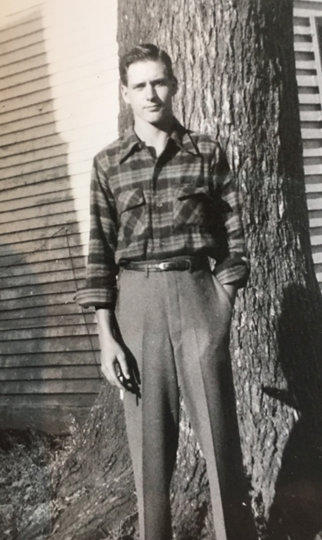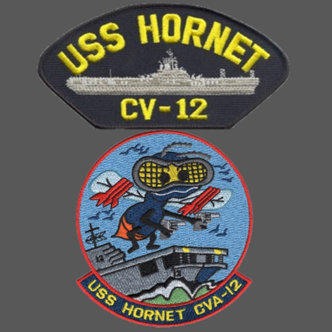
copyright © Wartime Heritage Association 2012-2024
Website hosting courtesy of Register.com - a web.com company
Wartime Heritage
ASSOCIATION
Remembering World War II
Name:
Fulton John Oliver
Rank:
Aviation Chief Machinist’s Mate
Service Number:
6075437
Service:
Torpedo Squadron 2 (VT-2),
USS Hornet (CV-12), US Navy
Awards:
Air Medal, Purple Heart
Date of Birth:
March 21, 1907
Place of Birth:
Point Edward, Sydney, Cape Breton, NS
Date of Enlistment:
Unknown
Place of Enlistment:
Unknown
Address at Enlistment:
Unknown
Age at Enlistment:
Unknown
Height:
5 feet, 11 inches
Complexion:
Ruddy
Hair Color:
Brown
Eye Color:
Blue
Occupation:
Portsmouth Naval Yard
Marital Status:
Married
Next of Kin:
Mary Margaret Oliver, wife
Date of Death:
September 21, 1944
Age:
37
Cemetery:
Manila American Cemetery and Memorial
Grave:
Walls of the Missing
Fulton John Oliver was the son of James S. Oliver (1871-1952) and Sarah Sadie McDonald (1874–1950). His
father was born in Sydney, Cape Breton, NS, and his mother was also born in Cape Breton. He had four
sisters, Mary Elizabeth Oliver (born in 1897), Sarah Frances Oliver (1900-1981), Anne S Oliver (1903-1977)
and Isabel Oliver (1915-1987), and two brothers George F. (born in 1907) and Alan Frederick Oliver (1909-
1966).
John and his family immigrated to the United States when John was six, in 1913. In 1920, the family was
living at Franklin Square in Gloucester, Mass. John’s father was working as a night watchman at a teaming
firm, his mother was a homemaker. His sister Frances worked as a packer in a glue factory, his sister Annie,
as an inspector in a shoe factory.
Fulton married Mary Margaret Lamb (1908-1965) of Rockport, Mass. on June 10, 1926, in Manchester, Essex
Co., Mass. Fulton and Mary had six children in Gloucester, Mass. They had five sons, John Fulton Oliver Jr
(1927–1982), George Oliver Weiler (1929–2013), born in Rockport, James Leroy ‘Roy’ Oliver Kelly
(1931–1998), David Norman Oliver Riemer (1933–2011), and Donald Oliver Weiler (1936–1953); and a
daughter Joan L Oliver Bennett (1931–2011). Roy and Joan were twins. Fulton and Mary were legally
divorced in 1936.
By 1940 John was living with his parents (now 70 and 63 years old) at 62 Middle Street in Gloucester, Essex
Co., Massachusetts, with his siblings George and Annie and his first son John Junior. His other children were
adopted into other families. John was working as a chauffeur.
Fulton registered for the US Draft on October 16, 1940, in Kittery, York Co., Maine. He was working at the
Navy Yard in Portsmouth, New Hampshire.
After enlisting in the Navy, he was stationed at the Quonset Point Naval Air Station, in North Kingstown,
Rhode Island. In addition to American training, beginning in 1943, pilots of the Royal Navy's Fleet Air Arm
were trained at Quonset Point to fly the Vought F4U Corsair, which was then brought into service on British
carriers.
Fulton served on the USS
Hornet (CV-12), the Essex-class
aircraft carrier during the
Second World War. The USS
Hornet was the second carrier
of her name, completed in late
1943, and assigned to the Fast
Carrier Task Force (variously
designated as Task Force 38 or
58) in the Pacific Ocean, the
navy's primary offensive force
during the Pacific War. In early
1944, Hornet participated in
attacks on Japanese
installations in New Guinea,
Palau and Truk among others.
Hornet then took part in the
Mariana and Palau Islands
campaign and most of the subsidiary operations, most notably the Battle of the Philippine Sea in June of
1944 that was nicknamed the "Great Marianas Turkey Shoot" for the disproportionate losses inflicted upon
the Japanese.
Fulton Oliver was killed in action on September 21, 1944. His Grumman Avenger aircraft took off from the
USS Hornet in a flight of five planes from Torpedo Squadron Two on a bombing mission against enemy
shipping and installations in Manila Bay, Luzon Island, The Philippines. Intense enemy anti-aircraft fire was
encountered near and over the target area. The plane he was aboard appeared to be hit, crash in flames in
Manila Bay and breakup. One parachute was seen to fully open and another to trail and hit the water but no
survivors were ever found.
Aviation Chief Machinist’s Mate Fulton John Oliver is remembered on the Walls of the Missing at the Manila
American Cemetery and Memorial in the Philippines. At the time of his death, his next of kin is recorded as
his wife, Lorraine Ames Oliver (1910-1990).
The USS Hornet and her aircrews were awarded the Presidential Unit Citation for their actions, including the
actions of Fulton John Oliver during his time on the Hornet:
Fulton’s first son, John Fulton Oliver Jr also served in the
US Navy from January 10, 1945 until August 7, 1946. He
served on the USS Los Angeles (CA-135), Baltimore-class
heavy cruiser, during the Second World War, and again
enlisted during the Korean War and served January 22,
1951 until January 8, 1952.
Son George served in the US Coast Guard; James Leroy
served from 1948-1952 in the US Army during the Korean
War, and David served as a Specialist Third Class in the US
Army.
Fulton John Oliver


Sources:
American Battle Monuments Commission
American Battle Monuments Commission – Manila American Cemetery
honorstates.org

The President of the United States takes pleasure in presenting:
the PRESIDENTIAL UNIT CITATION to the
USS HORNET
and her attached Air Groups participating in the following operations:
March 29 to May 1, 1944, Palau, Hollandia, Truk; June 11 to August 5, 1944, Marianas, Bonins, Yap;
September 6 to 24, 1944, Philippines, Palau: AG-2 (VF-2, VB-2, VT-2, Part of VFN-76).
October 10 to November 22, 1944, Ryukyus, Formosa, Philippines, Luzon; December 14 to 16, 1944,
Luzon; January 3 to 22, 1945, Philippines, Formosa, China Sea Ryukyus: AG-11 (VF-11 VB-11 VT-11).
February 16 to June 10, 1945, Japan, Bonins, Ryukyus: AG-17 (F-17, VBF-17, VB-17 VT-17).
for service as set forth in the following
CITATION:
"For extraordinary heroism in action against enemy Japanese forces in the air, ashore and afloat in the
Pacific War Area from March 29, 1944, to June 10, 1945. Operating continuously in the most forward
areas, the USS HORNET and their air groups struck crushing blows toward annihilating Japanese
fighting power; they provided air cover for our amphibious forces; they fiercely countered the enemy's
aerial attacks and destroyed his planes; and they inflicted terrific losses on the Japanese in Fleet and
merchant marine units sunk or damaged. Daring and dependable in combat, the HORNET with her
gallant officers and men rendered loyal service in achieving the ultimate defeat of the Japanese
Empire"

John Fulton Oliver Jr



- World War I - Menu
- WWI Stories and Articles
- Photos - Yarmouth Soldiers
- Selection of World War I Songs
- WWI Casualties of Yarmouth, NS
- Those Who Served - Yarmouth, NS
- WWI Casualties Digby Co. NS
- WWI Casualties Shelburne Co. NS
- Merchant Mariners (1915) Yarmouth, NS
- Canadian Forestry Corps - Non Yarmouth Birth/Residence Enlistments
- US Draft Registry - Yarmouth NS Born


- World War II - Menu
- WWII Stories and Articles
- Telegraphist Air Gunners
- WWII Casualties of Nova Scotia
- US Casualties with NS Connection
- Far East/Pacific Casualties with NS Connection
- Merchant Navy Casualties Nova Scotia
- Nova Scotia WWII Casualties Holten Canadian War Cemetery
- D-Day Casualties - Nova Scotia
- CANLOAN Program Casulaties - Nova Scotia
- Battle of the Bulge Casualties - Nova Scotia
- WWII Casualties Yarmouth NS
- Yarmouth Casualties - RCAF RAF Canadian Army WWII
- Yarmouth Co., Marrages WWII
- Casualties Non-Born/Residents with Connection to Yarmouth Co., Nova Scotia.
- WWII Casualties Digby Co., NS
- Non-Nova Scotian WWII Casualties Buried in Nova Scotia
- WWII RCAF Casualties Aged 16-18
- Brothers/Sisters Who Served - World War II













